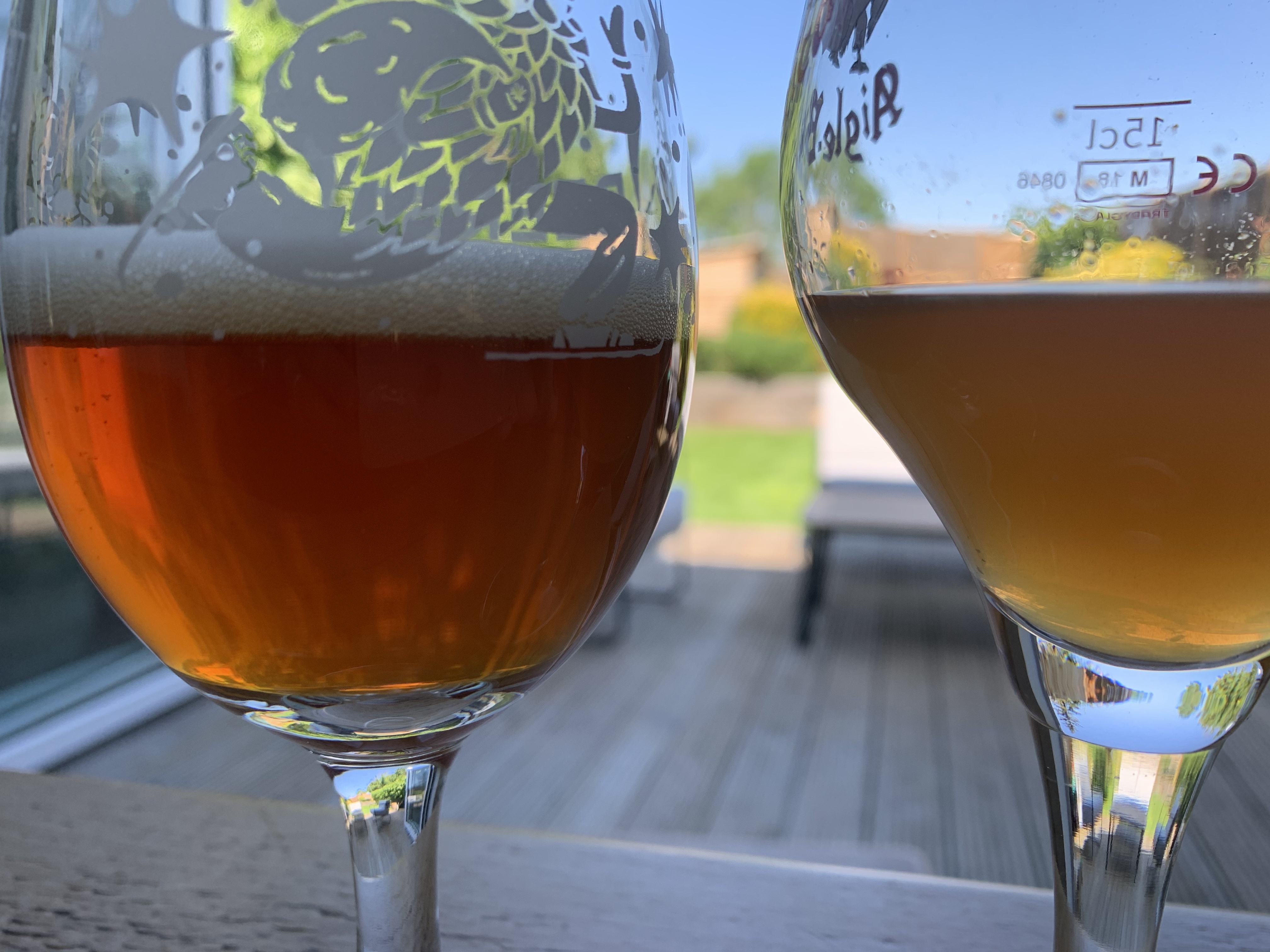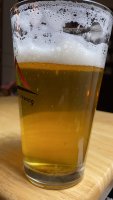benoj
Well-Known Member
- Joined
- Jun 8, 2020
- Messages
- 51
- Reaction score
- 19
Hey,
So recently i brewed what I was intending to be an old school clear west-coast IPA with high drinkability. What came out is a sort of - boring-ish, slightly too bitter on the finish un-refreshing beer type drink.
On the brew I had an issue with a broken pump in my Grainfather and so I couldn't cool it - and instead let it chill covered up for a few hours and then put in my fermenter at 55c and moved to my fermentation chamber to cool to pitch temps. I pitched around 16 hours later.
In terms of taste - it's not offensive. You can just about pick up some Simcoe but nothing else interesting at all. The malt is sort of present in a slightly flabby caramel way - can't be sure if it's the caramel malt vs oxidisation. In terms of aroma its muted - and nothing of interest.
I also fined with gelatine but the brew has remained slightly hazy... and it's fairly dark looking which is probably made worse by the haze.
I'm trying to work out if the recipe is bad or the brew was oxidised by the long chill process?
Here is the recipe that I used:
Vitals
Original Gravity: 1.062
Final Gravity: 1.012
IBU (Tinseth): 59
Colour: 20 EBC
Mash
Temperature — 65 °C — 60 min
Mash Out — 75 °C — 10 min
Malts (5.842 kg)
2.6 kg/5.7lbs (44.5%) — Simpsons Pale Ale Golden Promise — Grain — 5.5 EBC
2.321 kg/5.12lbs(39.7%) — Crisp Finest Maris Otter® Ale Malt — Grain — 5.5 EBC
610 g/1.3lbs (10.5%) — Crisp Dextrin Malt — Grain — 2 EBC
310 g/7oz (5.3%) — Simpsons Crystal Medium — Grain — 175 EBC
Hops (186.6 g)
16.6 g (23 IBU) — Magnum 12.8% — Boil — 60 min
10 g (4 IBU) — Fuggle 5% — Boil — 30 min
40 g (10 IBU) — Citra 14% — Aroma — 30 min hopstand
40 g (12 IBU) — Columbus (Tomahawk) 16% — Aroma — 30 min hopstand
10 g (3 IBU) — Simcoe 13.5% — Aroma — 30 min hopstand
40 g — Simcoe 13% — Dry Hop — 5 days
30 g — Citra 12% — Dry Hop — 5 days
Hopstand at 80 °C
Any advice on this would be massively appreciated - as I have a keg of extremely boring beer type drink now...
Ben
So recently i brewed what I was intending to be an old school clear west-coast IPA with high drinkability. What came out is a sort of - boring-ish, slightly too bitter on the finish un-refreshing beer type drink.
On the brew I had an issue with a broken pump in my Grainfather and so I couldn't cool it - and instead let it chill covered up for a few hours and then put in my fermenter at 55c and moved to my fermentation chamber to cool to pitch temps. I pitched around 16 hours later.
In terms of taste - it's not offensive. You can just about pick up some Simcoe but nothing else interesting at all. The malt is sort of present in a slightly flabby caramel way - can't be sure if it's the caramel malt vs oxidisation. In terms of aroma its muted - and nothing of interest.
I also fined with gelatine but the brew has remained slightly hazy... and it's fairly dark looking which is probably made worse by the haze.
I'm trying to work out if the recipe is bad or the brew was oxidised by the long chill process?
Here is the recipe that I used:
Vitals
Original Gravity: 1.062
Final Gravity: 1.012
IBU (Tinseth): 59
Colour: 20 EBC
Mash
Temperature — 65 °C — 60 min
Mash Out — 75 °C — 10 min
Malts (5.842 kg)
2.6 kg/5.7lbs (44.5%) — Simpsons Pale Ale Golden Promise — Grain — 5.5 EBC
2.321 kg/5.12lbs(39.7%) — Crisp Finest Maris Otter® Ale Malt — Grain — 5.5 EBC
610 g/1.3lbs (10.5%) — Crisp Dextrin Malt — Grain — 2 EBC
310 g/7oz (5.3%) — Simpsons Crystal Medium — Grain — 175 EBC
Hops (186.6 g)
16.6 g (23 IBU) — Magnum 12.8% — Boil — 60 min
10 g (4 IBU) — Fuggle 5% — Boil — 30 min
40 g (10 IBU) — Citra 14% — Aroma — 30 min hopstand
40 g (12 IBU) — Columbus (Tomahawk) 16% — Aroma — 30 min hopstand
10 g (3 IBU) — Simcoe 13.5% — Aroma — 30 min hopstand
40 g — Simcoe 13% — Dry Hop — 5 days
30 g — Citra 12% — Dry Hop — 5 days
Hopstand at 80 °C
Any advice on this would be massively appreciated - as I have a keg of extremely boring beer type drink now...
Ben
Last edited:


 -I'm at 10.5% so suggested for Sweet Stout / Dark mild...
-I'm at 10.5% so suggested for Sweet Stout / Dark mild...

